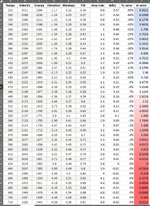It seems like it would take longer to set up a spotter than to get prone on the pack. I'm just saying that in these scenarios you described, where there wasn't time to check an app, it seems like there wouldn't be time to set up a spotter. I guess you're saying that in those scenarios, a spotter was set up in the same time it took the shooter to set up, and this helped achieve the 8/8 success rate in these situations?
I guess this really boils down to time pressure and which system works better when approximations have to be made. I can see the edge for mils in this case for both wind and drop.
BUT, should we be taking rushed shots at long range without calculating a precise firing solution? It's like the one small piece of the puzzle we can control, and every little bit of error compounds throughout the process.

